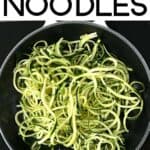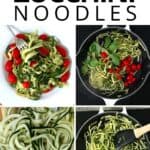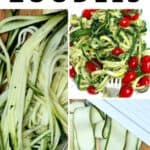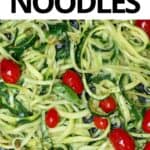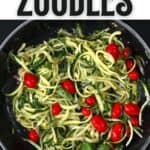This post may contain affiliate links. Please read our disclosure policy.
The ultimate guide on how to make and cook zucchini noodles (aka zoodles / courgetti) with or without a spiralizer, + 5 cooking methods, FAQs, AND a bonus pesto zucchini noodles recipe!
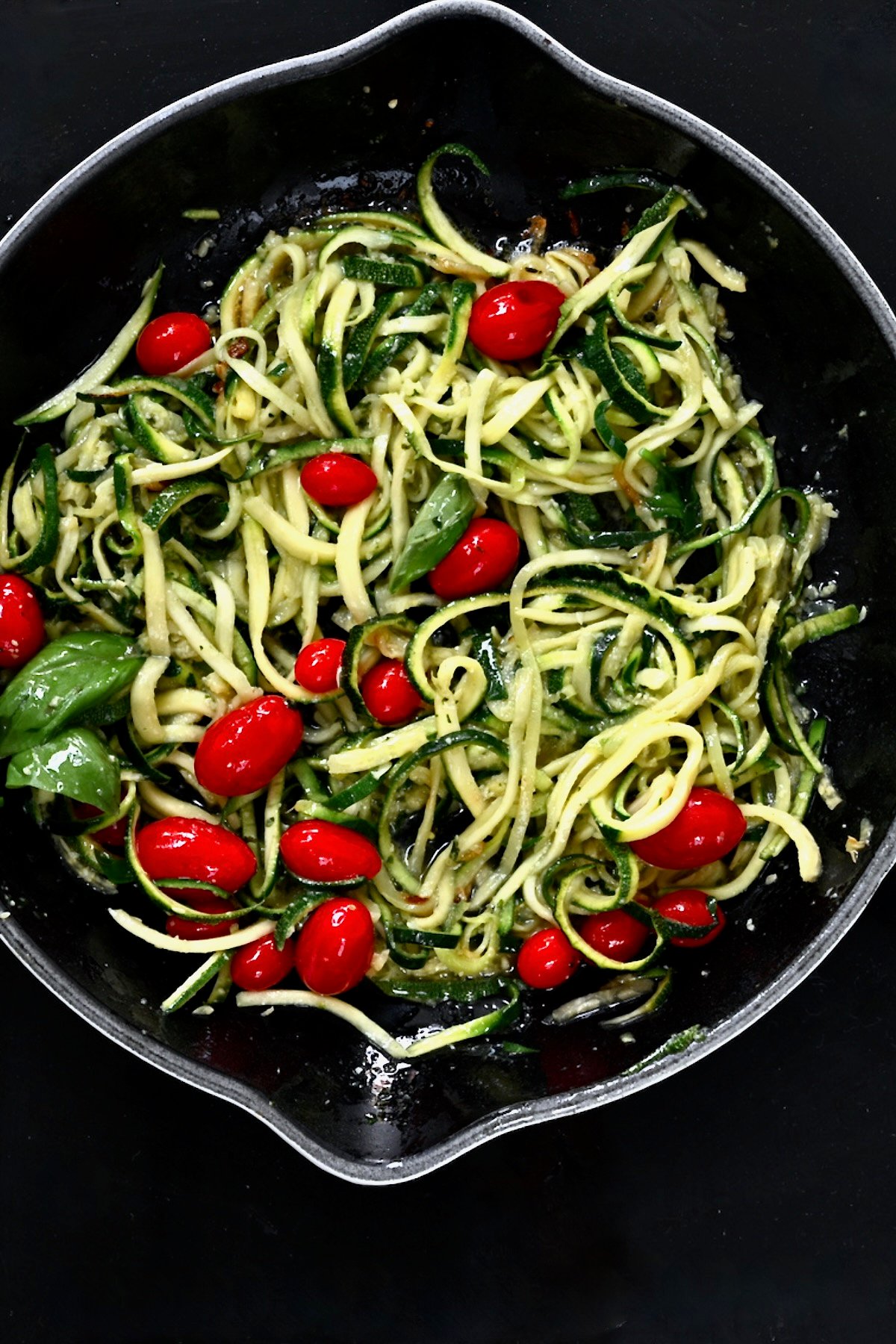
Even though the ample homemade pasta recipes suggest otherwise, I’m slightly obsessed with swapping out pasta for slightly crisp, tender zucchini noodles (aka zoodles) at any opportunity. This is why I thought it was about time I compiled this ultimate guide on how to make and cook zoodles (aka zucchini noodles/courgetti)!
Learn how to make zoodles with and without a spiralizer, turning to other kitchen tools like a julienne peeler or mandoline to get the job done with top tips for the best results.
Following that, if you don’t plan to consume them raw (which is also delish!), it’s time to learn how to cook zucchini noodles perfectly and avoid sogginess, using one of FIVE methods depending on your desired results.
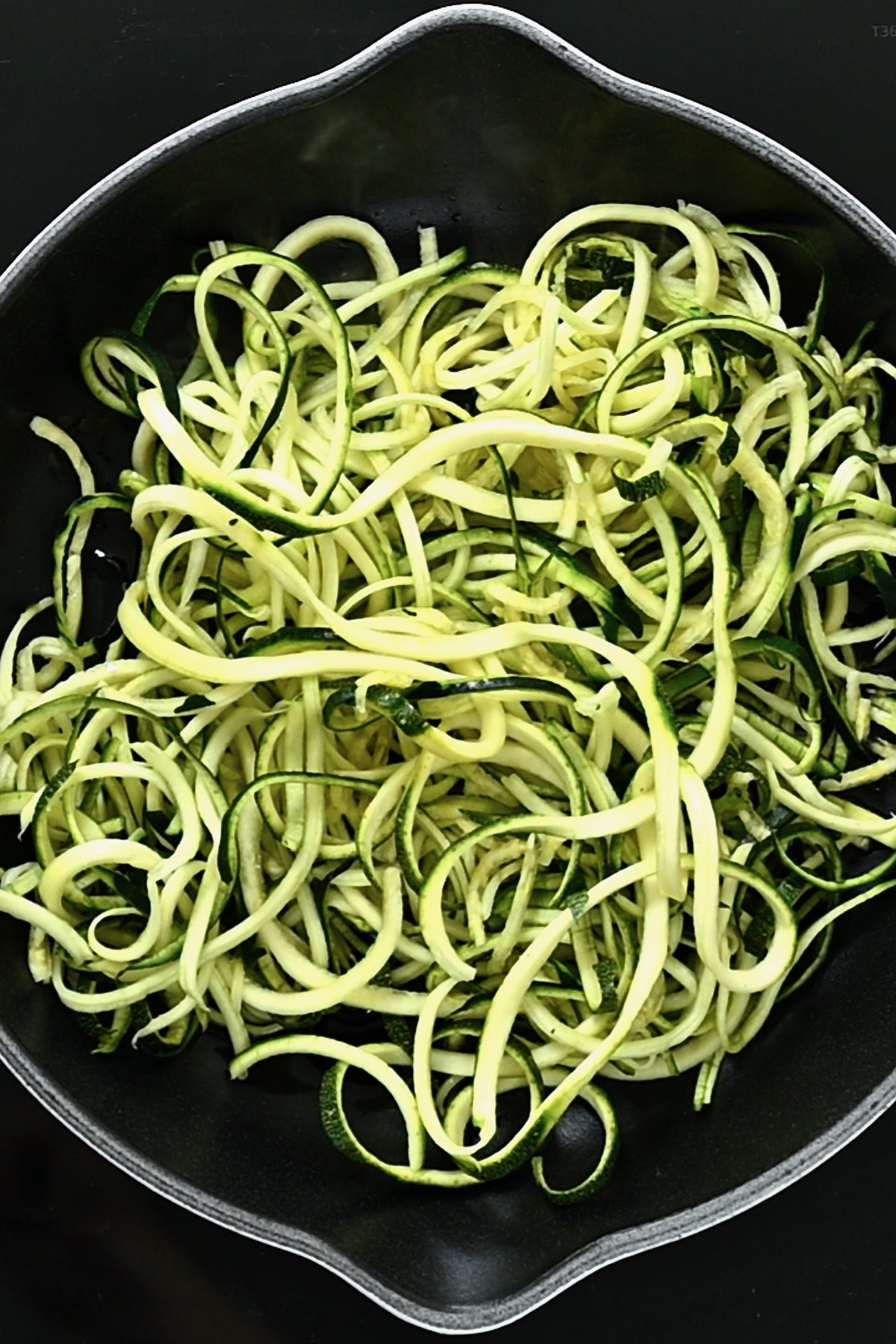
Substitute the courgetti/zoodles in place of regular noodles with all your favorite sauces, sauté them with a little salt and pepper, butter, garlic, and parmesan cheese, add some shrimp, or even add them to soups and salads… the pairings are up to you. I’ve even included an FAQs section and a BONUS quick and simple pesto zucchini noodles recipe (with tomatoes and basil) in the recipe card below!
What’s in This Post
What Are Zoodles
Zoodles, also called zucchini noodles (or courgetti/courgette noodles), are long ting strips of zucchini (called courgette in several countries) made to resemble noodles and used as a
- Healthier
- Gluten-free
- Low calorie (around 20kcal per cup)
- Low fat
- Keto/Low-carb
alternative to pasta! Plus, thanks to their mild flavor, the healthy noodles are highly versatile.
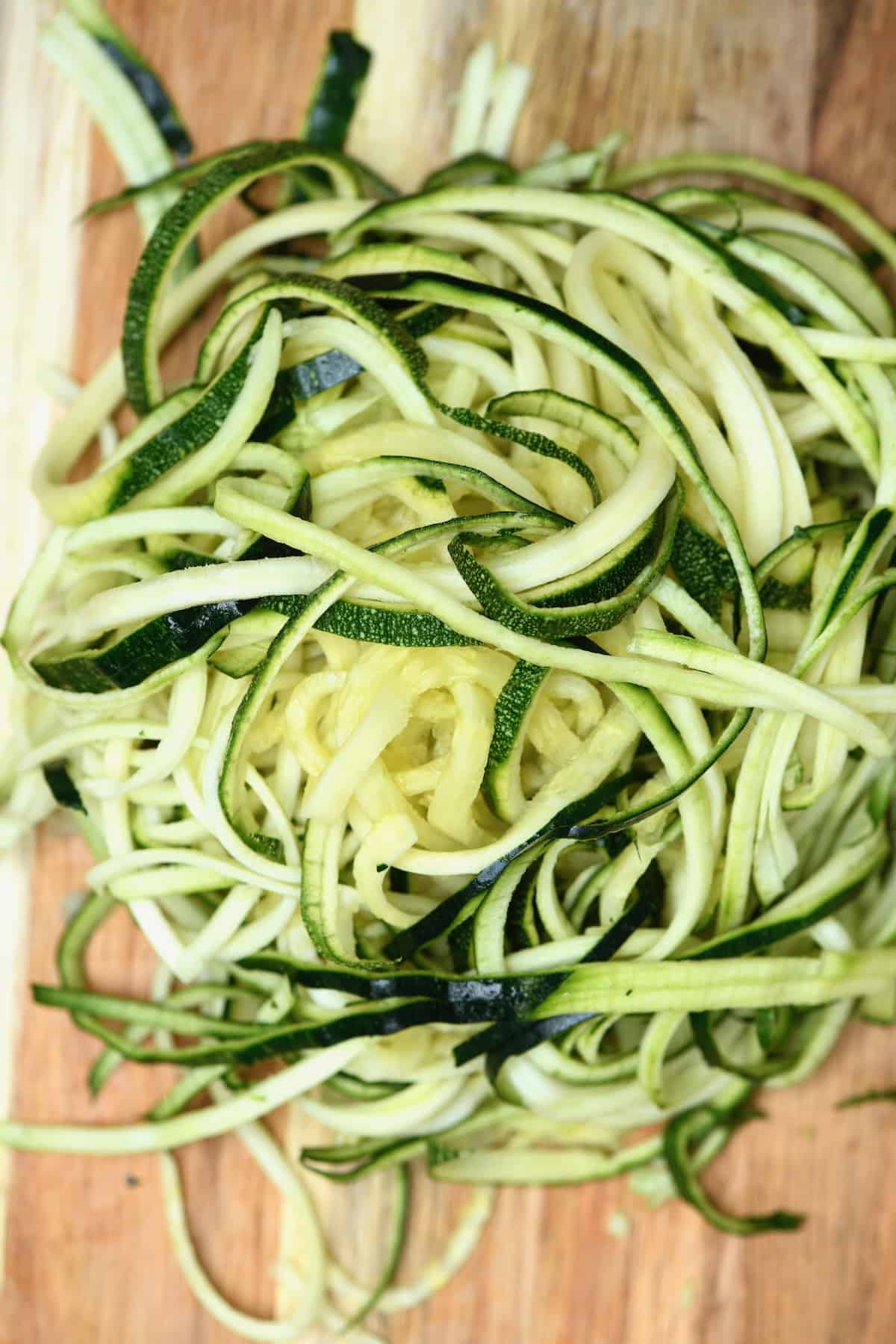
How to Make Zucchini Noodles
The most common method of making zoodles is with a spiralizing tool. However, if you want to save on counter space and aren’t planning to use it often, there are several other options.
With a Spiralizer
There’s a reason spiralizers are the go-to for veggie noodles and ribbons. They’re easy to set up, require minimal effort, and it takes seconds to prepare a batch of zoodles. Plus, they contain several types of blades for different uses (including a thinner and thinner noodle blade and a flat ribbon noodle option).
The only downsides are that a spiralizer takes up more space than the other options below and can be a bit of a faff to clean. It’s also important to note that this method is best for larger zucchini, as smaller ones won’t spiralize as easily.
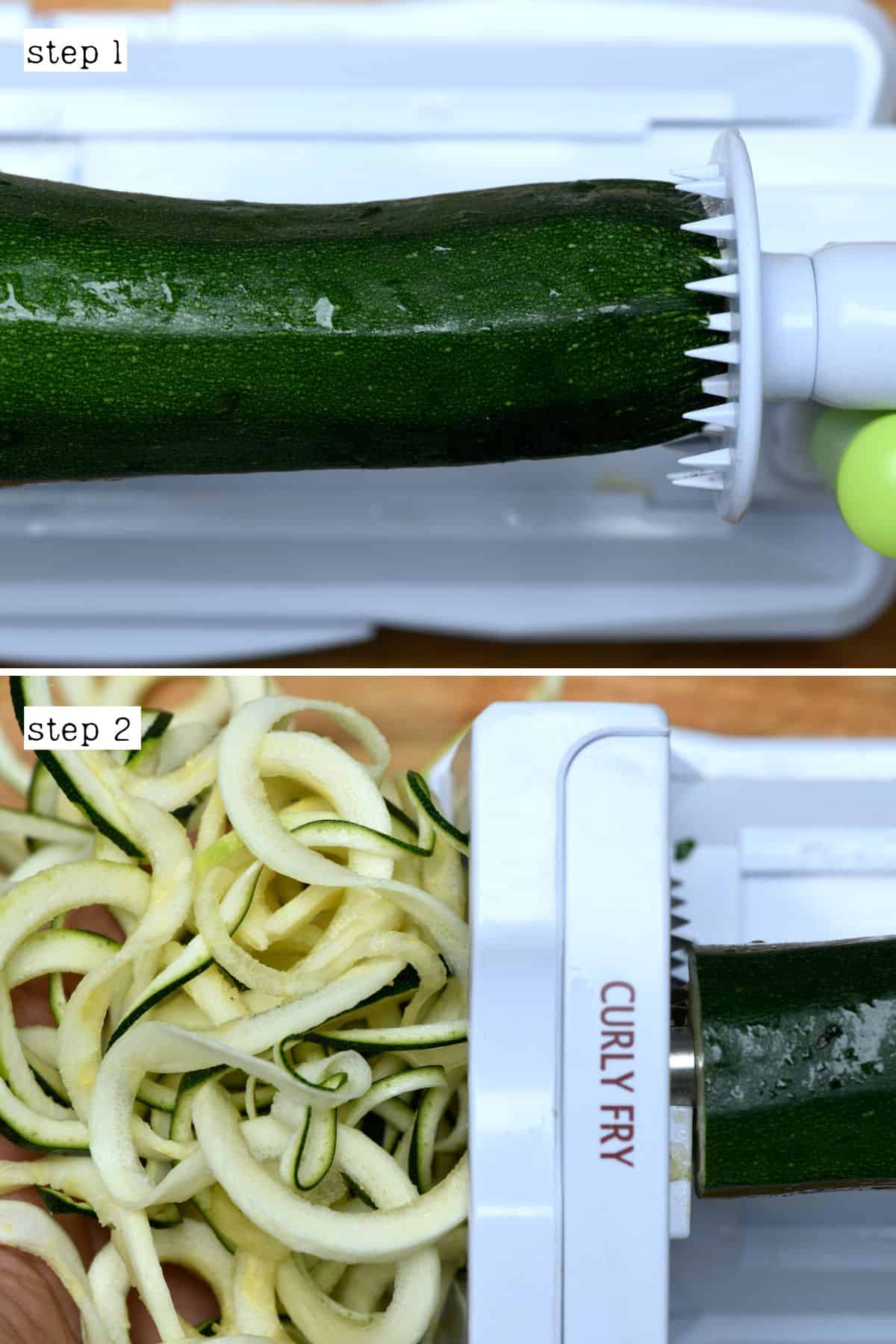
To use a spiralizer, stick the suction cup feet on your desired surface, cut off both ends of your zucchini, press one end into the spiky bits (making sure it’s centered), and the other into the blade, and spin. Your zoodles are ready about 10 seconds later.
If you want them to be slightly shorter, then use a knife or scissors to snip them down to size.
You can also purchase smaller hand-held spiralizers in the shape of a pencil sharpener. These are cheaper and much smaller to store. While these also work, the noodles will usually become flatter, not as even in size and shape, and can cause more noodle breakage than a spiralizer. It also takes more effort, strength, and time.
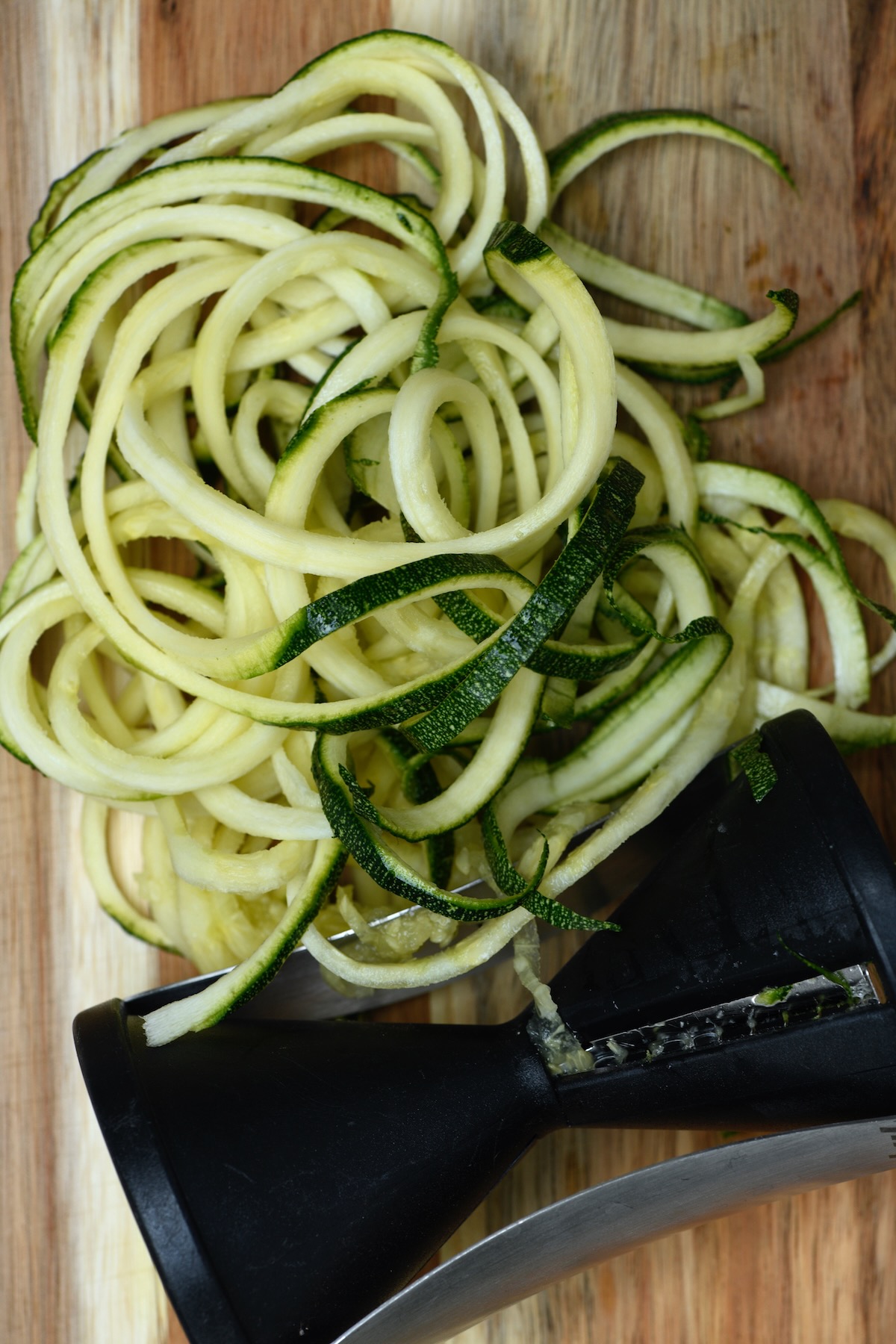
How to Make Zoodles Without a Spiralizer
With a Mandoline
If your mandoline comes with a julienne setting, these can make long, thin strips of zucchini similar to the julienne peeler method mentioned below (but slightly thicker). You could also use it to slice wide “ribbon” (pappardelle) noodles of varying thickness. As I nearly always have my mandoline out, this is my go-to method behind a spiralizer.
This method is also ready in seconds but requires a bit of finesse to ensure the veg is all your cutting! It also takes up quite a bit of space (less than a spiralizer, but more than any other tool mentioned.)
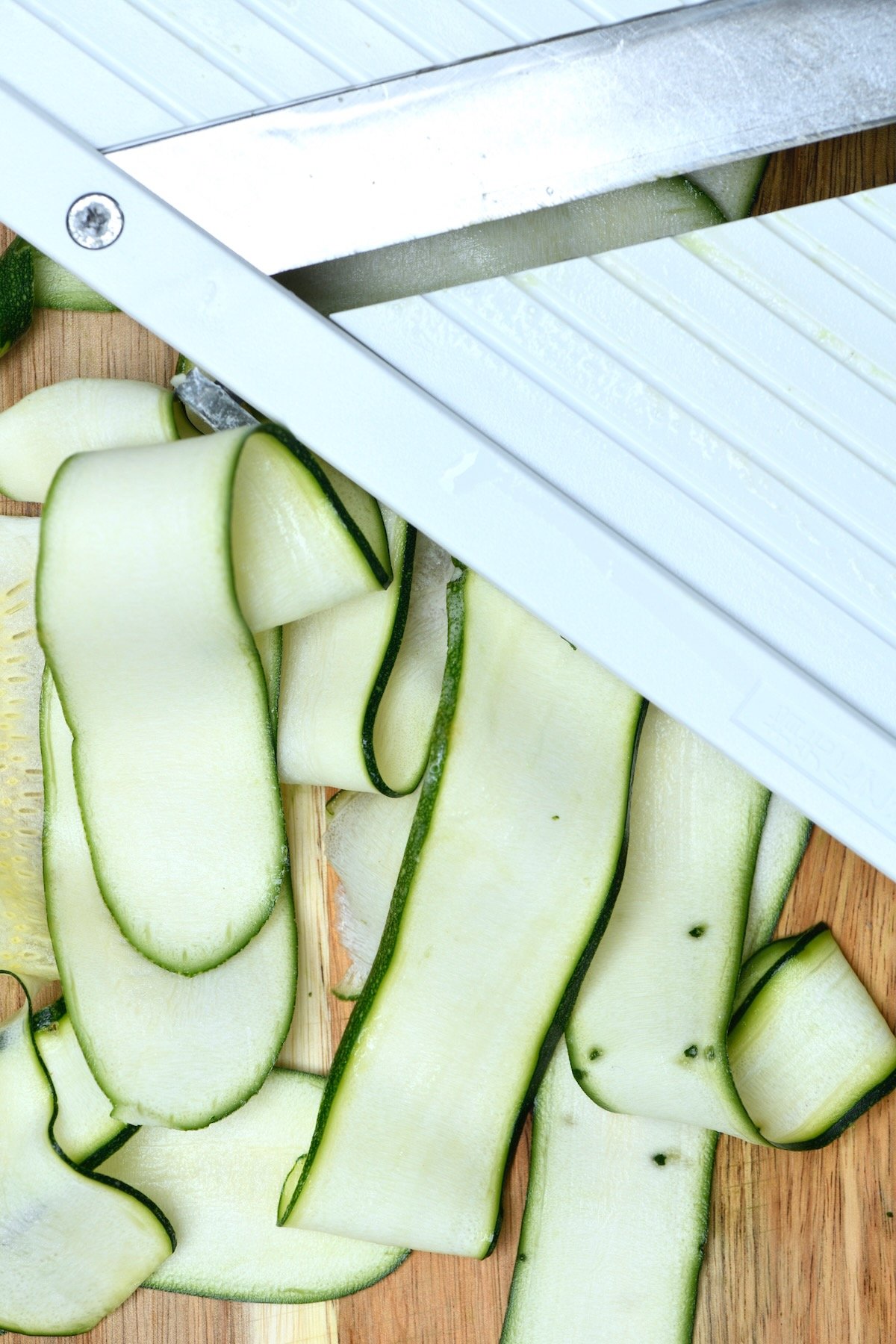
To use it, ALWAYS use the veggie “holder” and protective gloves (those blades are SHARP, and yes, I know that from experience!).
Slice both ends from the zucchini. Decide how thick you want the zoodles to be using the knob at the side of the spiralizer, then push the zucchini lengthwise down the side of the spiralizer to slice.
With a Julienne Peeler
If you already have this in your kitchen, this is a great alternative to a spiralizer. While the noodles will come out as thinner strips, they are even in size and make for delicate zoodles (like “angel hair” noodles). Plus, it takes up minimal kitchen space!
Simply slice off both ends of the zucchini and then drag the julienne peeler down the side of the zucchini from top to bottom and repeat all the way around the zucchini. Then gently pull apart the noodles.
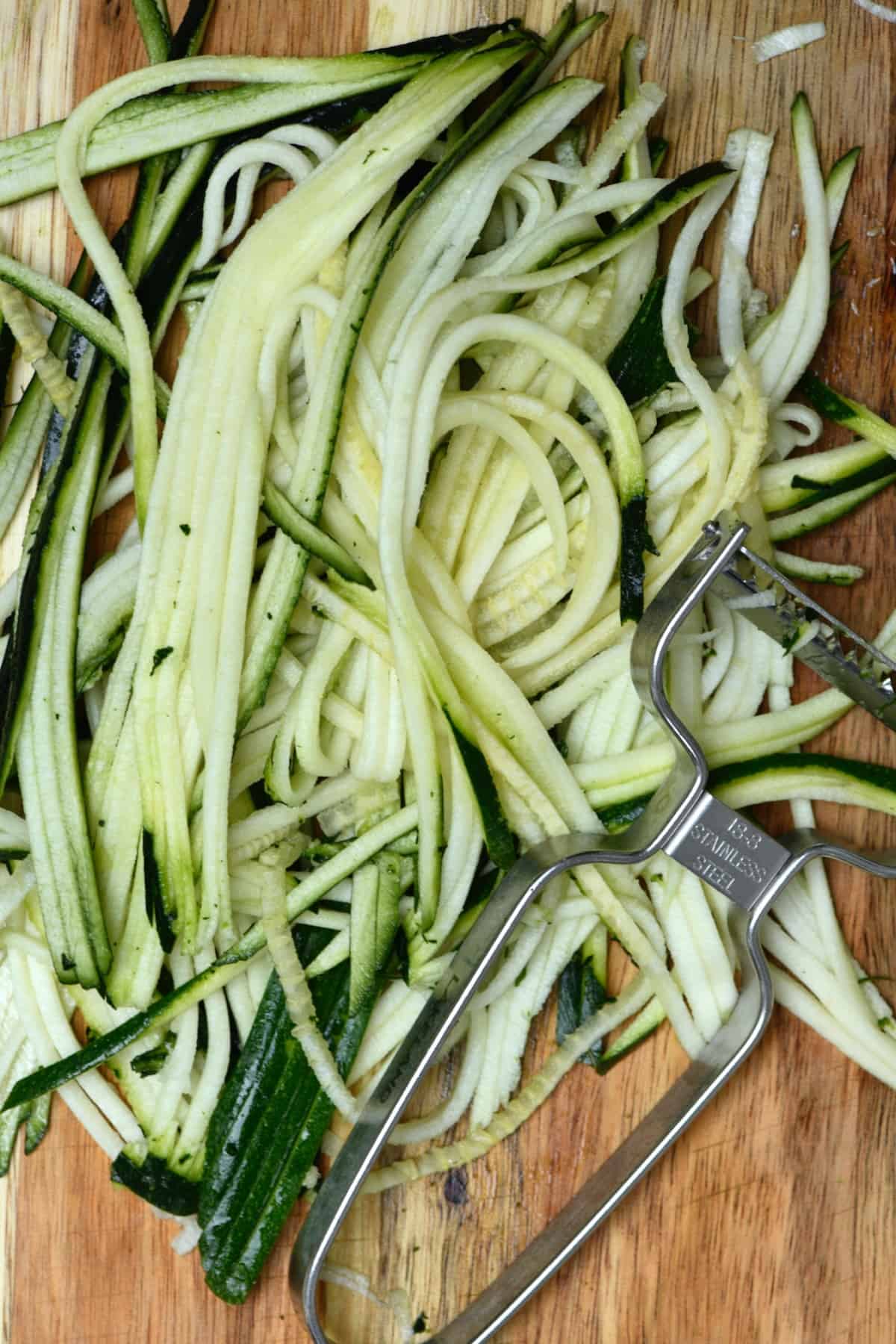
Bonus: You could also use a regular vegetable peeler to make thick “Fettucine” style noodles and slice them in half so they aren’t too wide.
Julienne by Hand
If you have the knife skills, you can, of course, julienne the zucchini by hand. However, as you can probably guess, this method takes the most time, effort, concentration, and skill. Though all it requires is a sharp knife, so it’s accessible to all!
Start by slicing off the ends of the zucchini and then, standing it upright, slice very thin lengthwise slices (about 1/8 inch – 3mm). Then, separate the slices into two stacks to lay flat-side-down on your chopping board. Use your knife to slice very thin strips across one half, then repeat with the other half.
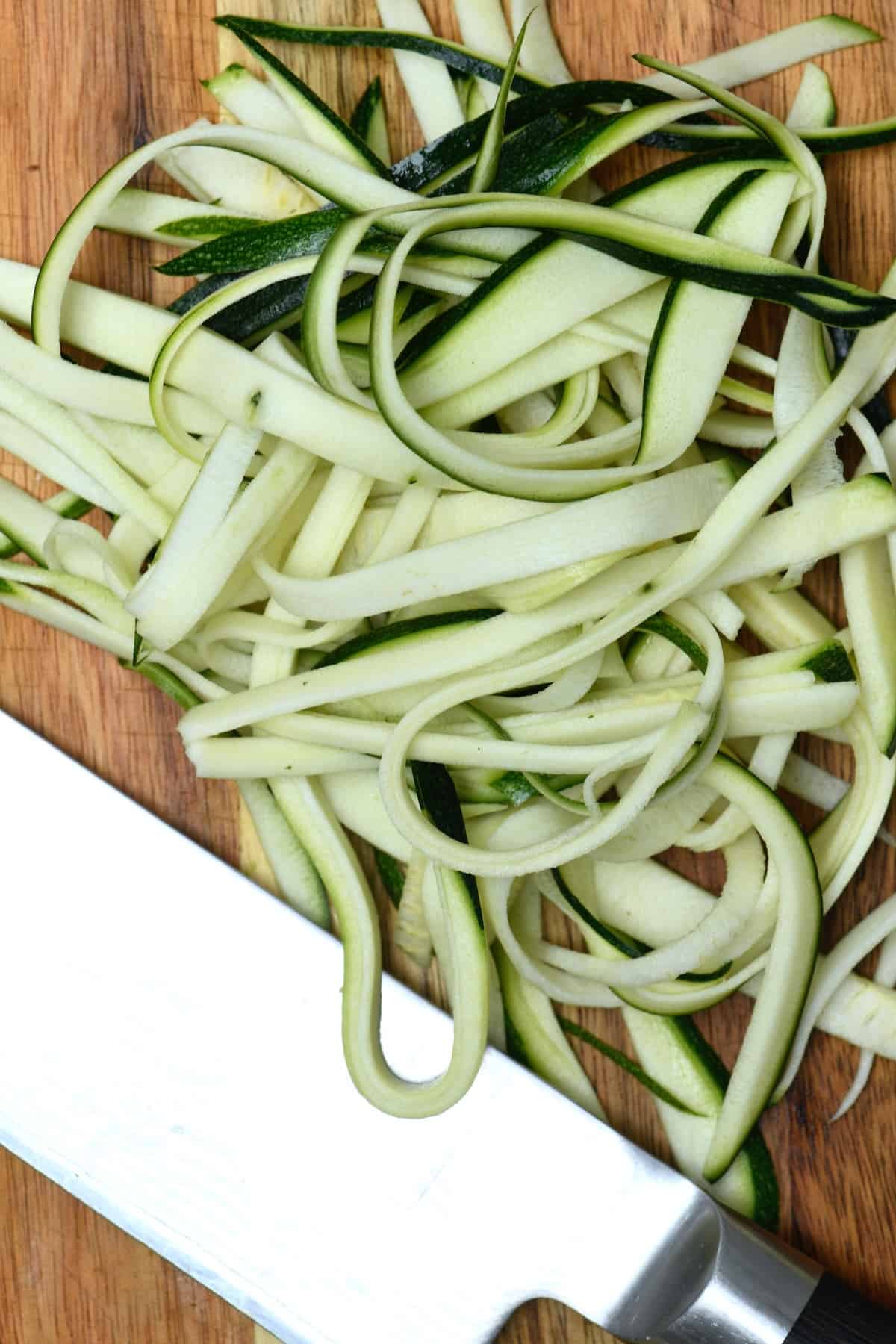
Serving and Cooking Recommendations
Once you have the zucchini noodles cut, cooking them is your next step. Zucchini, like watermelon and cucumber, is made up primarily of water. In fact, 95% of it! This means that the incorrect cooking method can quickly turn your wonderful strands of zucchini noodles into a soggy mess of mushiness.
Below are all the ways I’ve tested cooking (aka “heating up”) these veggie noodles for tender-crisp, al dente results every single time.
Eat Them Raw
If you’ve ever wondered “can you eat zoodles raw”, I’m happy to say that the answer is YES. Just toss the veggie noodle with the seasonings and sauce of your choice, and serve!
This way, you’ll never have to worry about soggy noodles. Plus, serving them with a hot sauce will naturally heat the noodles slightly, and colder sauces (like pesto) pair wonderfully with the crisp raw courgette.
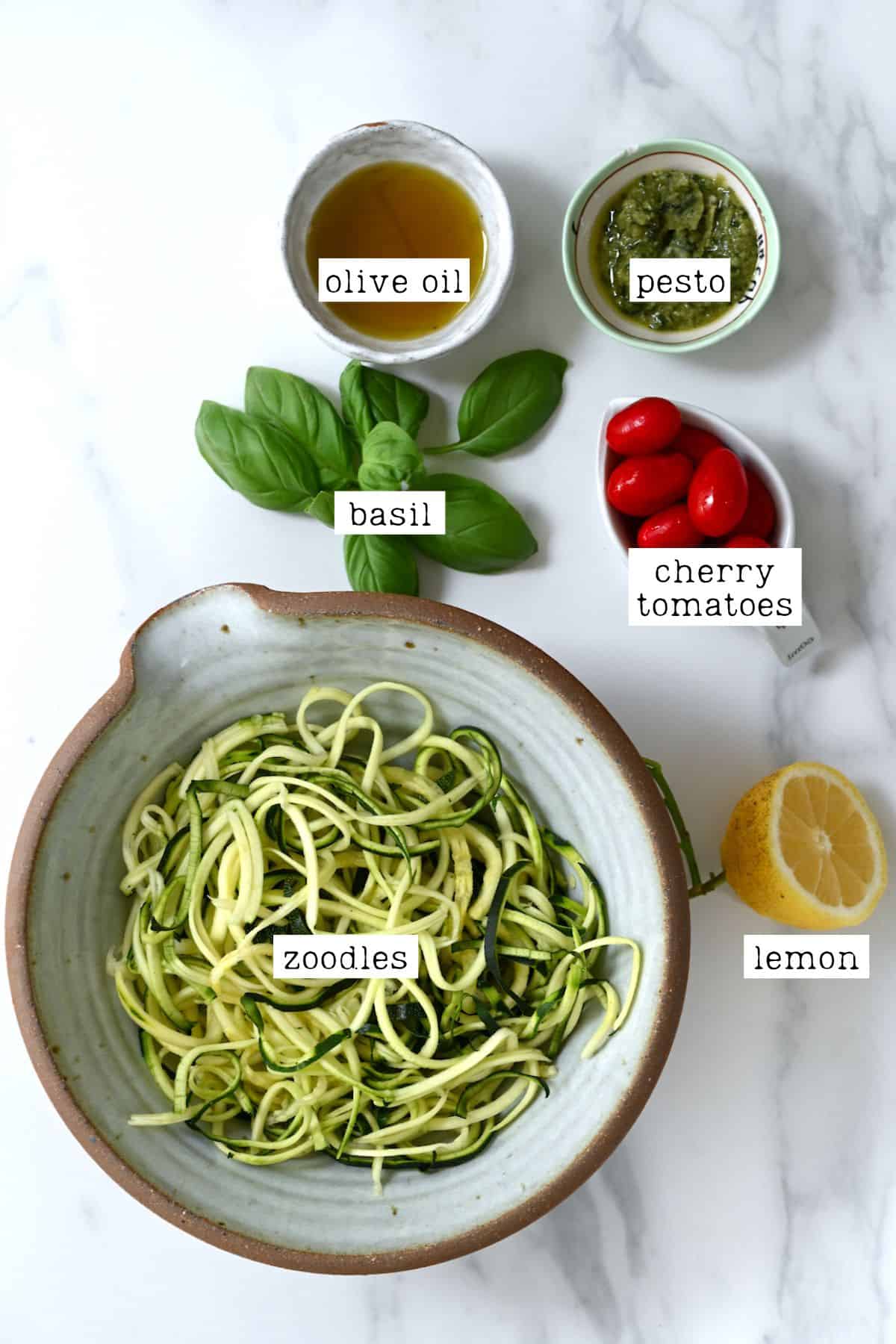
How to Sauté Zoodles
This is my favorite method for tender-crisp zucchini noodles and the option I use most often when making a heartier meal since the oil adds extra fat and calories.
Simply heat a large skillet with a tablespoon of olive oil or butter over medium-high heat. Then add the noodles and sauté, tossing them often, for 2-3 minutes (1-2 minutes if you’re making a single-serve portion).
If you want browned, crisper noodles, allow them to cook untouched for 40-60 seconds, then flip and repeat.
Quick Zoodle Recipe: Zucchini Pasta
As the sautéing method is my favorite, I often use it to make quick zucchini pasta. I love adding pesto and cherry tomatoes to it. Making this dish takes just a few minutes. Check the Recipe Card below for all the details.
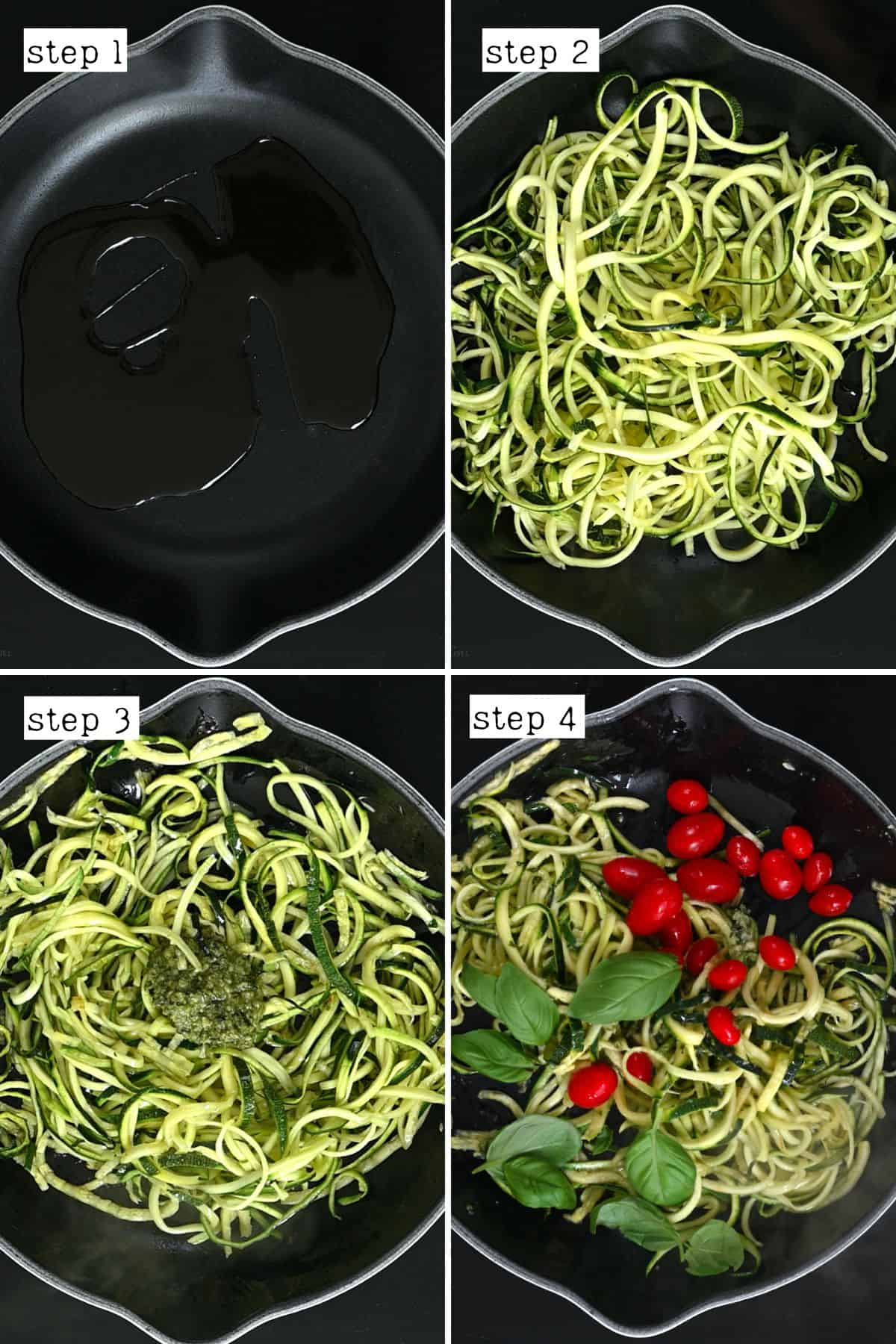
How to Boil Zoodles
The technique for boiling zucchini noodles is actually more of a “blanch” but is one I don’t often use as I’m usually wary about adding MORE water into the cooking process of this waterlogged ingredient.
I find this method best when you plan to serve them in soup. Just pop the noodles in right before serving, and the residual heat will cook them in the few minutes it takes to get everyone to the table.
Bring a pot of water to a boil, add the noodles and cook for one minute (up to 3 minutes depending on the thickness and batch size). Then, drain the noodles well using a colander and serve with your choice of sauce.
How to Roast Zoodles
I’ll be honest, I don’t use this method often. It takes the longest and requires an extra “step” of effort, with no major benefits. The only time I’ll use this method is if I’m sticking something else in the oven at the same temperature, so it means I don’t have multiple things “on the go” in different areas of my kitchen.
To use this method, start by preheating the oven to 350ºF/180ºC. Then, spread the zoodles across a large baking pan in a thin layer, pat them dry with paper towels, bake for 12-15 minutes, then pat dry once more.
Use a thin layer of noodles to reduce the risk of sogginess and make the most of the oven’s ability to dry out the zucchini noodles.
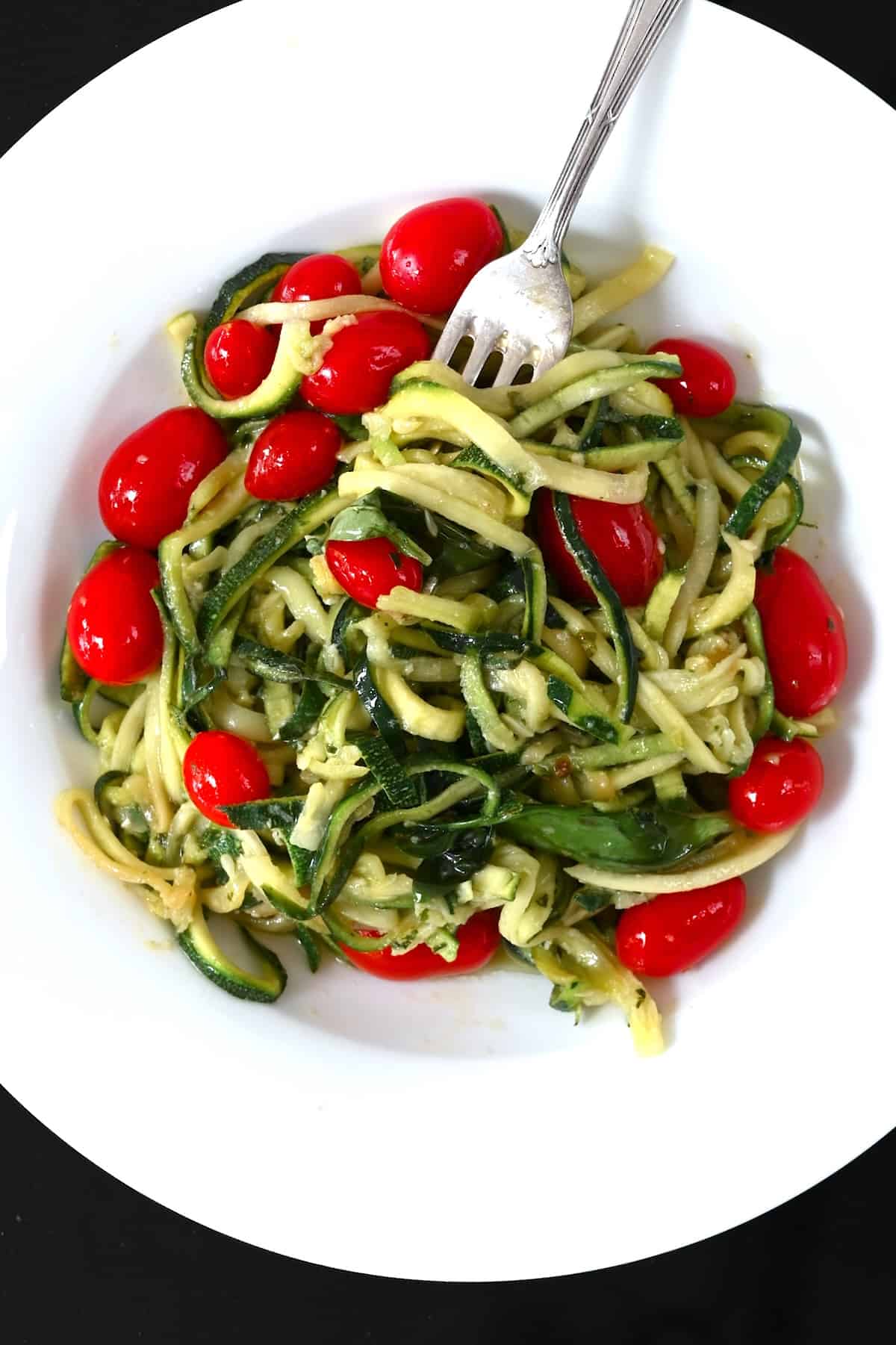
How to Air Fry Zoodles
This method is similar to the oven one. The benefit of air frying zoodles is that it’s a bit faster. You can also air fry the zucchini together with another ingredient that requires the same temperature and time.
To use this method, start by preheating the air fryer to 350ºF/180ºC (if needed). Pat dry the zoodles well and season them to your liking. Then, spread them in your air fryer basket/tray and bake for 8-10 minutes. To make them more crispy, air fry them a couple of minutes longer.
How to Microwave Zoodles
Cooking zoodles in a microwave is super speedy, but it can cook the noodles slightly unevenly and may be harder to monitor and ensure they aren’t becoming soggy. However, once you’ve found the perfect time for your microwave, it’s also a fuss-free, simple method that requires no additional fat for cooking and ends up with “al-dente” noodles.
Just pop the noodles into a microwave-safe bowl and microwave them for a minute. If they need longer, do so in 15-second increments to prevent over-cooking. You may also want to pat them dry if they’ve released lots of liquid.
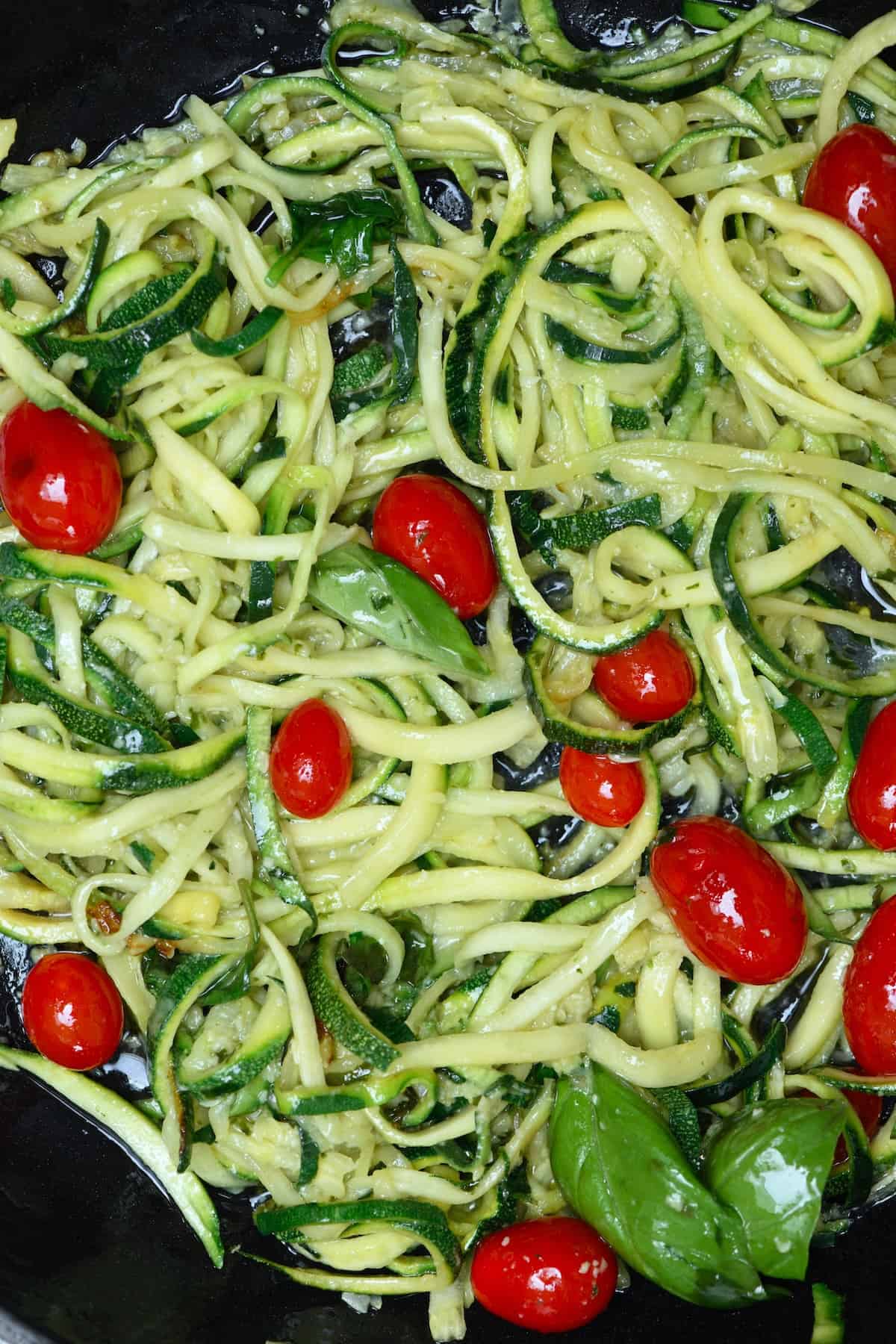
How to Dehydrate Zoodles
This method dries the healthy noodles into a crunchy snack and is delicious if you have a dehydrator.
Spread the noodles in a thin layer across your dehydrator shelf/ shelves and dry them at 125ºF/52ºC for 6-8 hours (or overnight). When ready, they should snap rather than be limp and rubbery.
Top Tips for Making Zucchini Noodles
- Look for even-sized and shaped zucchini: Zucchini that are long and don’t contain curves/bumps are much easier to turn into zucchini noodles.
- Don’t peel the zucchini: The peel helps to keep the zucchini sturdy when cooking it, PLUS it adds extra fiber and nutrients.
- Avoid salting it too soon: Salt draws out the excess water in zucchini and will lead to softer (or potentially mushy) zoodles. So it’s better to salt it just before serving.
- Be careful not to overcook the zucchini: Zucchini can turn from tender-crisp to mush in seconds. So keep an eye on it for a somewhat firm texture like al dente pasta.
- Using summer squash: aka the “yellow looking zucchini” will cook in the same way, so it can easily be substituted.
- Experiment with cooking methods: What is my least favorite may yield your favorite results. So take time to experiment and find your desired results.
- To save time: buy pre-spiralized zucchini available in several major grocery stores.
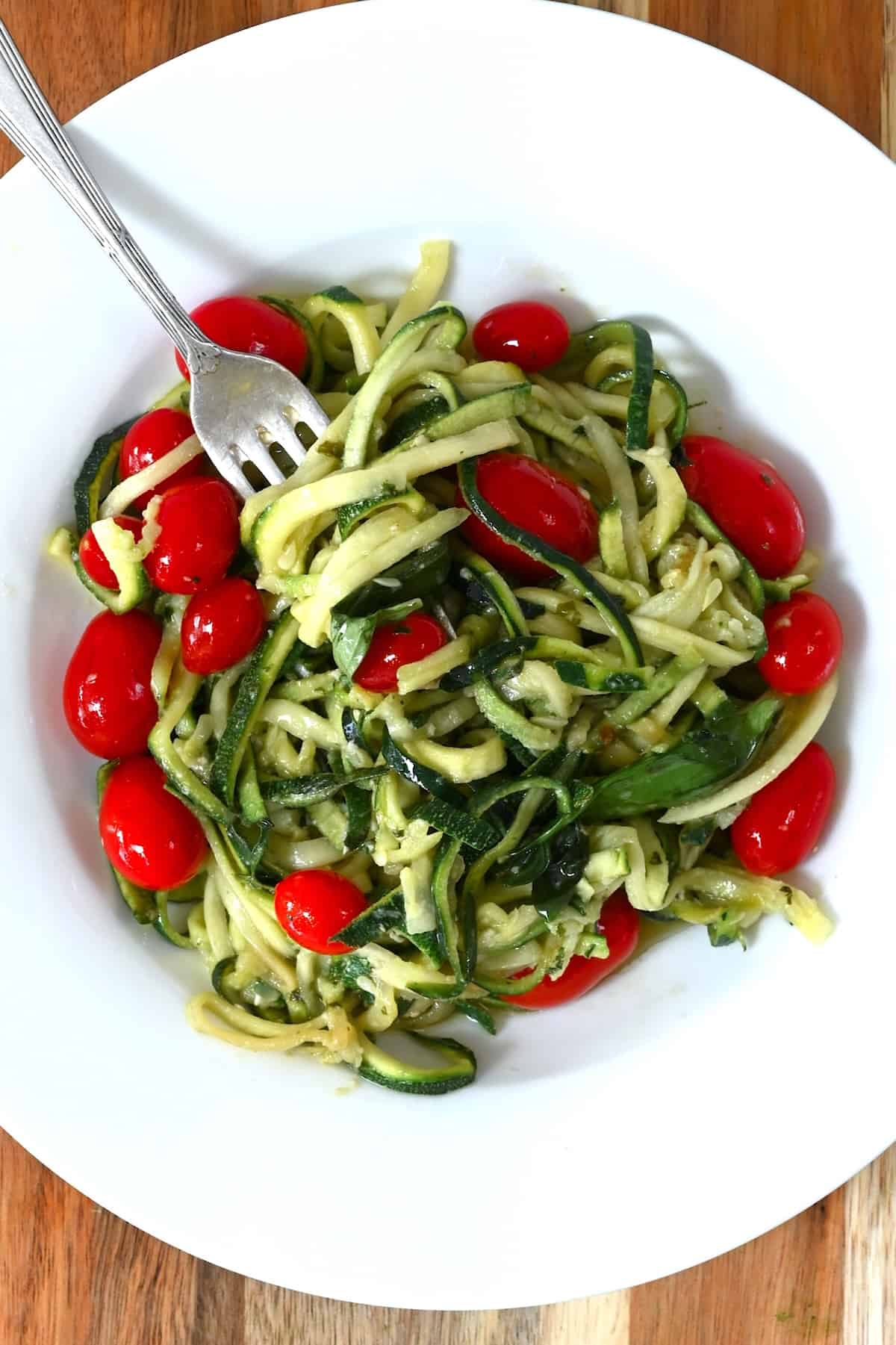
FAQs
You can prep several batches of these healthy ingredients in one go and store them in an airtight container or Ziplock bag with paper towels for 4-5 days.
While it’s technically possible, I’m not a fan of doing so as I find they become mushy upon thawing.
If that isn’t a problem for you, blanch the zoodles first, pat them thoroughly dry, spread them across a parchment-lined baking sheet, and flash freeze the noodles until solid. Once solid, transfer them to a Ziplock bag for 4-5 months for the best flavor, though it’s safe for up to a year!
I don’t recommend it, as it tends to make them limp and soggy.
In some cases, pre-salting zucchini is great for pulling out excess liquid before cooking this ingredient, so it doesn’t leak lots of liquid into your dish. For this courgetti recipe, though, it just makes them soggy and limp (and obviously increases the sodium content).
A cup of zucchini noodles contains around 3.5g of total carbs (2.4g of net carbs) compared to the 30-40g of net carbs in a cup of regular pasta.
A medium zucchini will usually make around a bowl’s worth of noodles.
More Easy Zucchini Recipes
- Simple sauteed zucchini
- Crispy vegan zucchini fritters
- Air fryer zucchini fries
- Stuffed zucchini boats
- Zucchini pizza bites
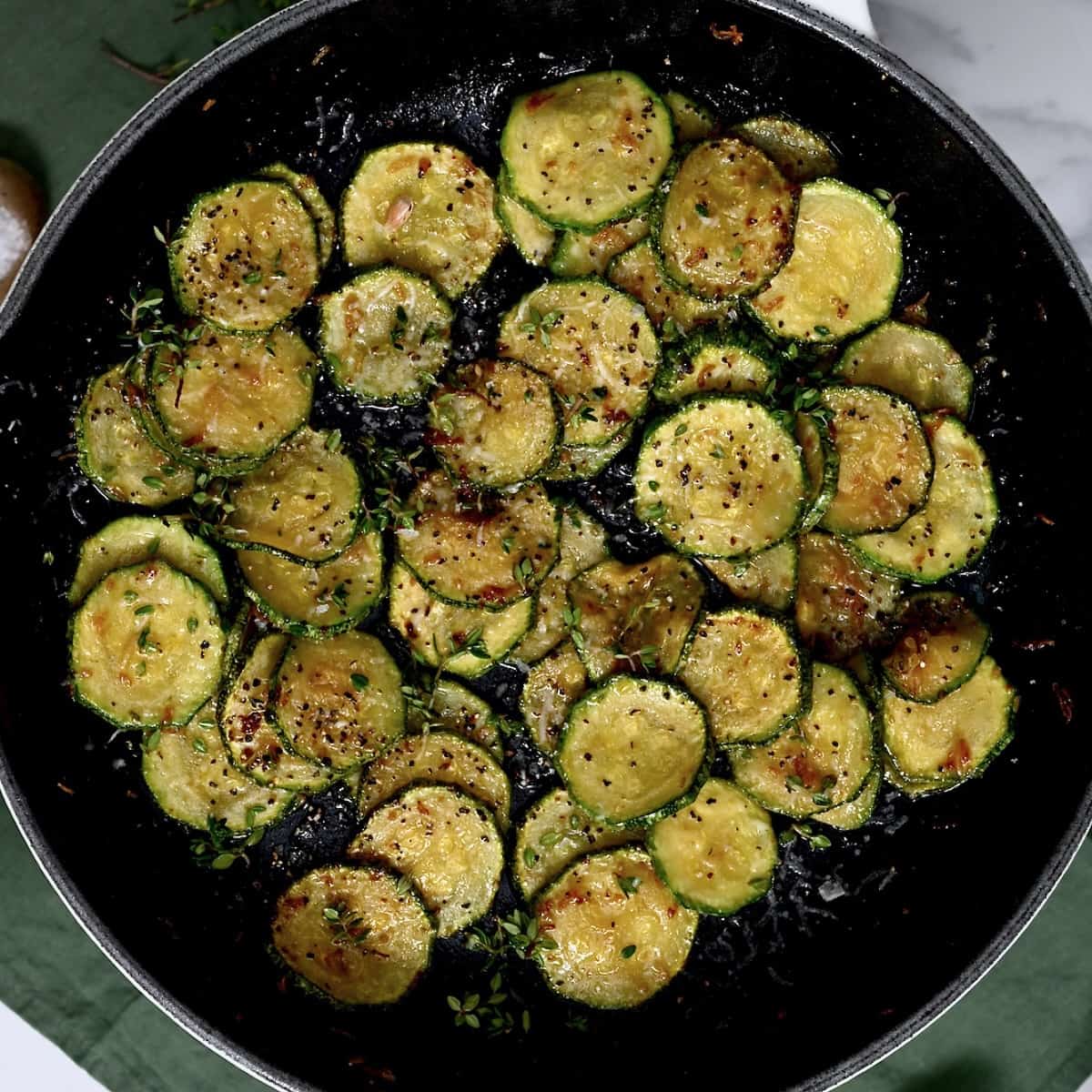
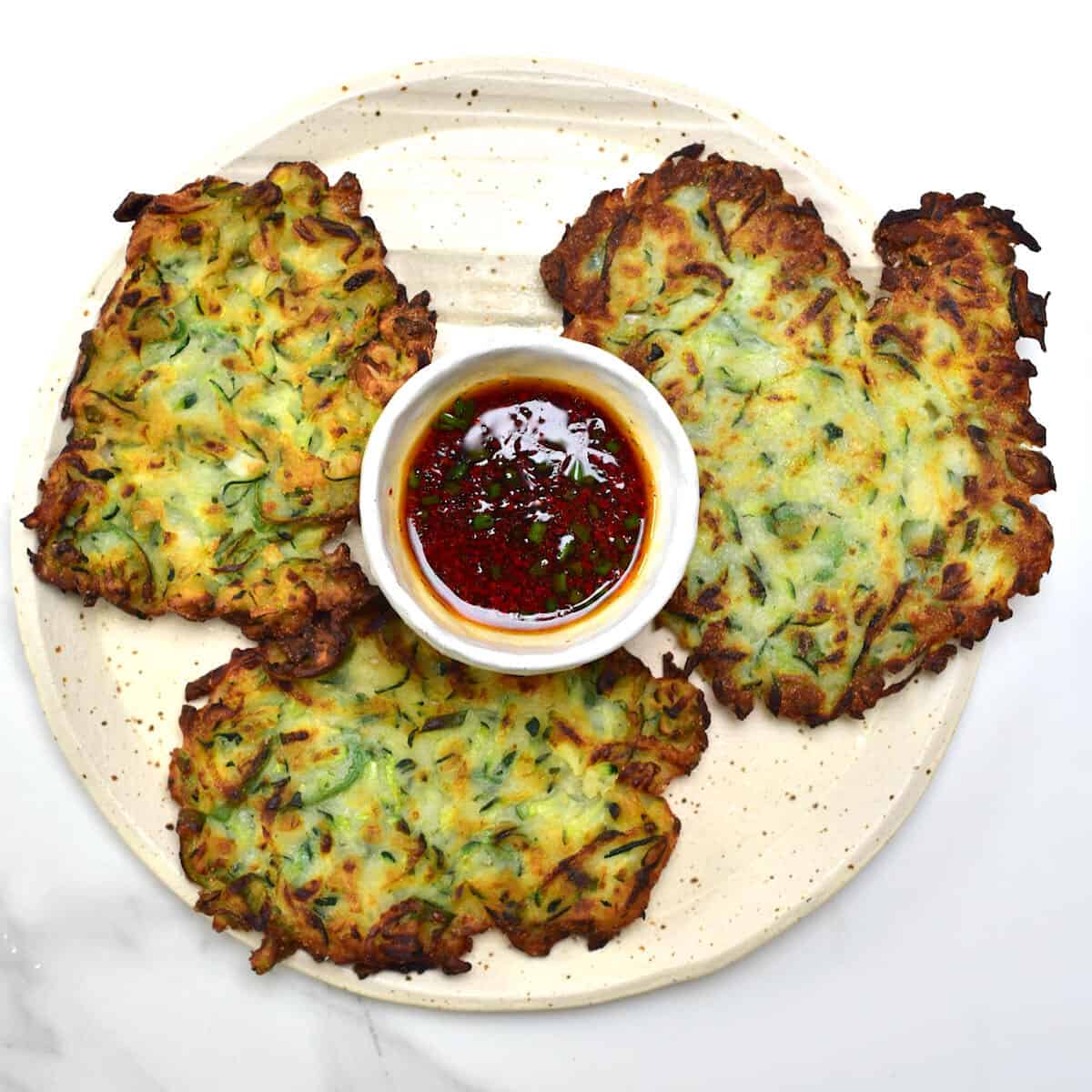
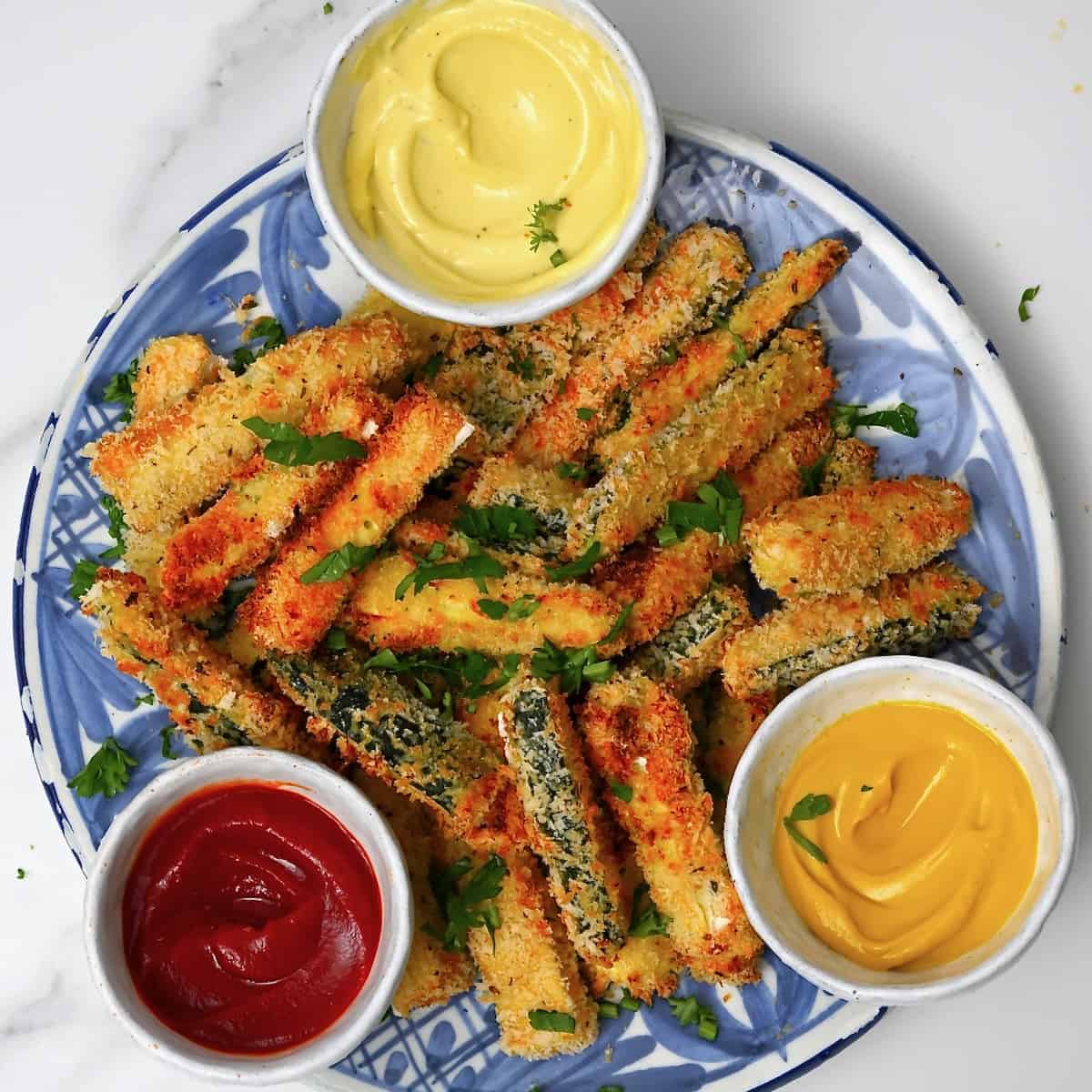
If you try this easy zucchini noodles/zoodles recipe, I’d love to hear your thoughts/questions below. Also, I’d appreciate a recipe card rating below, and feel free to tag me in your recipe recreations on Instagram @Alphafoodie!
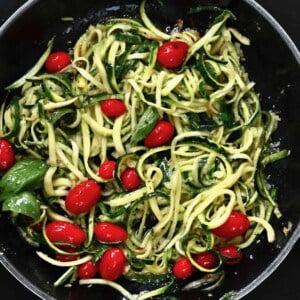
How to Make and Cook Zoodles (Pesto Zucchini Noodles)
Ingredients
- 9 oz zucchini 2 medium-sized
- 2 Tbsp olive oil or avocado oil
- 2 Tbsp pesto regular or vegan
- 2.4 oz cherry tomatoes about 1/4 cup
- 6-7 basil leaves
- 1 Tbsp lemon juice from 1/2 lemon
Instructions
Make the Zucchini Noodles
- Use a spiralizer to make the zucchini noodles. Check the blog post for more tips on how to use a spiralizer. You can also use a vegetable peeler or julienne peeler, a knife, or a mandoline to cut the zucchini into thin long strips. Check the blog post for more tips!
Sauté the Zoodles
- Heat a large skillet over medium-high heat with the oil. Once hot, add the zoodles and cook for just 1-2 minutes, stirring frequently.
- Add the tomatoes and cook for a further 2-3 minutes until they soften.
- Spoon in the pesto and stir well then cook for just long enough to warm it up – then serve and enjoy the pesto zoodles with a few basil leaves and a squeeze of lemon juice.
Other Cooking Methods
- You can cook (or heat) zoodles in several other ways, depending on your needs and in what recipes you will use them:– Boil/blanch – add to hot water for up to 3 minutes. – Roast in the oven – bake at 350ºF/180ºC for 12-15 minutes. – Air fry – similar to the above, cook them 350ºF/180ºC for 8-10 minutes.– Microwave – heat for 1 minute in the microwave.– Dehydrate – for a crunchy snack, dry them at 125ºF/52ºC for 6-8 hours (or overnight).Check the blog post for more top tips for each method!
Notes
- Look for even-sized and shaped zucchini: Zucchini that are long and don’t contain curves/bumps are much easier to turn into zucchini noodles.
- Don’t peel the zucchini: The peel helps to keep the zucchini sturdy when cooking it, PLUS it adds a ton of extra fiber and nutrients.
- Avoid salting it too soon: Salt draws out the excess water in zucchini and will lead to softer (or potentially mushy) zoodles. So it’s better to salt it just before serving.
- Be careful not to overcook the zucchini: Zucchini can turn from tender-crisp to mush in seconds. So keep an eye on it the entire time and be careful not to overcook them. You’re looking for a somewhat firm texture similar to al dente pasta.
- Using summer squash: aka the “yellow looking zucchini” will cook in the same way, so it can easily be substituted.
- Experiment with cooking methods: What is my least favorite may yield your favorite results. So take time to experiment and find your desired results.
- Adding zoodles to soup: Don’t cook them, just add them to the soup when serving to keep them crisp.
- To save time: You can actually buy pre-spiralized zucchini in several major grocery stores.
Nutrition
Nutrition information is automatically calculated, so should only be used as an approximation.

